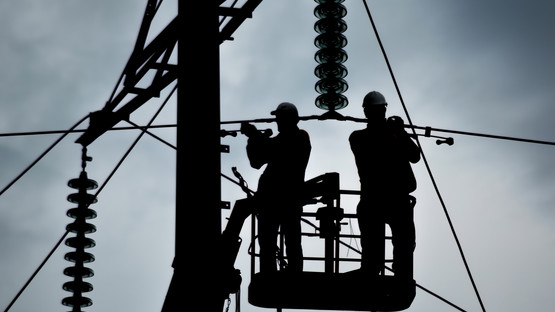
Addressing the changing connections landscape
Over recent years, we have witnessed significant and rapid change in the energy landscape, including the type and volume of developments wanting to connect to the transmission network.
We have seen a significant volume of customers applying to connect to the electricity transmission network, with an increase of over 250GW in the past year- pushing the total contracted capacity to over 500GW. The increased number of connections drives the need for greater network reinforcement- delaying connection dates behind triggered enabling works
There is a collaborative effort across industry to address the connections challenge. Find out more about how National Grid Electricity Transmission is helping to drive changes below- or read our latest response to detailed reform proposals here.
Understanding the connections challenge
We believe the current connections challenge is made up of two areas:
a) The existing connections arrangements
The Market (directed by policy)
An open market for generation and demand which drives developers to apply only to secure their place in the pipeline.
The Contract (governed by the process)
The connection agreement is captured within a contract which currently lacks required, consistent obligations for developers to demonstrate progress. This is being addressed via Queue Management.
The Physical Works (the work to facilitate a connection)
Currently, connection works are driven by new customer projects. This includes works such as new physical connections, e.g. a new substation, as well as potentially increasing the capacity of infrastructure such as overhead lines or cables- or driving entirely new circuits. This triggered work will then drive the connection dates for any projects entering the pipeline after the initial project. This results in inefficient allocation of works as it effectively reserves capacity for projects, potentially blocking access for others, rather than focusing on strategic physical works where they are needed across the network.
b) The current connections landscape
Arguably, the biggest problem currently faced by all stakeholders in the connections landscape is the size of the contracted background of connections.
In England and Wales, the connections pipeline currently stands (as of November 2023) at 500GW, comprising over 700 contractual agreements, and is continuing to grow at an accelerated rate. This representing significantly more than we will need to connect under any credible future energy needs scenario.
Work is currently underway to assess key next steps on this issue as part of NESOs Connection Reform measures.

How we work in Connections
Find out more about the current ways or working to deliver customer connections, how we're preparing the electricity network for the transition to net zero and maintaining an efficient and secure power supply in England and Wales.
About our workWhat is reform of the connections process driving?
We believe successful reform must deliver:
- A connections process that has an effective level of entry requirements and contractual obligations. This will effectively progress credible and ready to connect developments to in timescales that align to their needs.
- The separation of network design from the connections process, enabling strategic decisions about where to create capacity and provide for customer connections, rather than designing the network to support specific connections.
To realise this ambition, we have identified 5 pillars for the changes we want to see
Some of these are initiatives led by NGET, and others are spearheaded by the NESO through their reform of the connections process.
NGET has identified the need to build the physical connection points ahead of customer demand, e.g. substations, which will create capacity hubs and a long-term aim of providing customers with understanding of planned capacity ahead of their applications to inform and strengthen their investment decisions.
NGET is leading on developing a new standardised modular connection point for customers, suitable for many types of project, enabling faster and more flexible connections.
The NESO is working on ensuring projects meet certain key requirements before being granted a place in the connections pipeline, e.g., securing land rights, should enable resources, time, investment, and capacity to be allocated to projects which are most likely to connect. Find out more here.
The Queue Management code modification as led by the NESO and now approved by Ofgem will ensure milestones are applied to projects and if milestones are missed, reallocate capacity to progressing projects. Find out more about Queue Management here.
To realise the benefits of a new connections regime and address the well documented issues with grid connections, NGET advocates for urgent action to address the pipeline of contracted connections. This will apply the elements of the new arrangements, once determined by industry- to the contracted background to ensure equal treatment of all future connections where possible.


